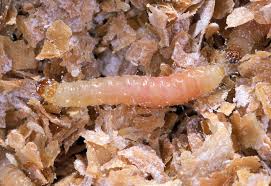Introduction
Scientific entomology is a field of science that makes a speciality of the look at insects and arthropods that affect human health. One of the largest factors of medical entomology is the presence of mouth larva, that are the larval degrees of positive fly species which can motivate extensive public fitness problems. Those larvae can act as disease vectors, transmitting pathogens that cause a range of ailments, and their presence poses a massive challenge for public fitness. In this article, we can delve into the sector of mouth larva in scientific entomology, exploring the species concerned, the diseases they can transmit, and the public health implications of their presence.
Species of Mouth larva
Mouth larva, also known as myiasis-inflicting flies, belong to numerous families, along with Calliphoridae, Sarcophagidae, Oestridae, and Muscidae. Those flies are determined in various areas around the world and have been tailored to various ecological niches. a number of the maximum super species consist of the not unusual residence fly (Musca domestica), the screwworm fly (Cochliomyia hominivorax), the bot fly (Dermatobia hominis), and the tumbu fly (Cordylobia anthropophaga). Every of those species has precise characteristics and behaviors that contribute to their function as vectors of disorder.
Diseases Transmitted by means of Mouth larva
Mouth larva can transmit more than a few pathogens that cause sicknesses in human beings and animals. The transmission of these pathogens takes place while the person flies deposit their eggs on the pores and skin, wounds, or mucous membranes of a number. Once the eggs hatch, the resulting larva feeds at the host’s living or necrotic tissue, imparting an environment for the pathogens to proliferate. A number of the illnesses transmitted by using mouth larva encompass:
Cutaneous Myiasis:
This circumstance takes place when the larva infests the skin, inflicting localized swelling, ache, and potential secondary bacterial infections. The larva of the tumbu fly and the screwworm fly are commonplace reasons of cutaneous myiasis in human beings and animals.
Ophthalmomyiasis:
In this condition, the larva infests the eye, leading to irritation, redness, and capability damage to ocular tissues. The larva of positive fly species, which includes the sheep nasal bot fly (Oestrus ovis), can cause ophthalmomyiasis in human beings and animals.
Intestinal Myiasis:
Some species of mouth larva can infest the gastrointestinal tract, mainly signs and symptoms which include stomach ache, nausea, and diarrhea. The larva of certain fly species, which include the human bot fly (Dermatobia hominis), are known to cause intestinal myiasis.
Wound Myiasis:
When wounds or open sores are infested by way of mouth larva, they could delay the restoration system and increase the chance of secondary infections. The larva of diverse fly species, inclusive of the common residence fly, can cause wound myiasis.
Public Health Concerns
The presence of mouth larva poses huge public fitness worries due to their capacity to transmit diseases and cause extensive pain and morbidity in affected people. In addition to the direct fitness impacts, mouth larva can also result in monetary losses in farm animals and agricultural settings. Public health government and entomologists have to cope with those concerns via centered surveillance, control measures, and public training.
Surveillance and Control Measures
Surveillance of mouth larva includes tracking fly populations, identifying potential breeding sites, and enforcing manage measures to save you from infestations. This may include the use of insecticides, environmental adjustments to do away with breeding websites, and the implementation of animal fitness protocols to save you from infestations in cattle. Moreover, public health authorities can also conduct educational campaigns to raise attention to the risks of myiasis and promote preventive measures, including wound care and personal hygiene practices.
Public Education and Prevention
Public education performs an essential position in stopping mouth larva infestations and minimizing the chance of associated illnesses. Educational campaigns can tell communities approximately the behaviors of myiasis-inflicting flies, the significance of right wound care, and the need to try to find medical attention if myiasis signs and symptoms are determined. Furthermore, promoting right hygiene practices, which include right waste management and using insect repellents, can help reduce the hazard of fly infestations.
Research and Innovation
Advancements in Asian Scientific entomology research and innovation are crucial for growing effective techniques to cope with the public fitness issues associated with mouth larva. This includes the improvement of novel insecticide formulations, the exploration of biological manage methods, and the investigation of host-pathogen interactions to perceive capability objectives for ailment prevention and treatment. Moreover, ongoing research can make a contribution to the development of diagnostic equipment for rapid identity of myiasis-causing pathogens and the assessment of their antimicrobial resistance profiles.
Conclusion
Mouth larva in Asian Scientific entomology constitute a massive public health problem because of their capacity to transmit illnesses and motive discomfort and morbidity in affected people. By information about the species involved, the illnesses they can transmit, and the general public fitness implications of their presence, entomologists and public fitness governments can develop centered surveillance, control measures, and public education projects to mitigate the risks associated with myiasis. Through collaborative efforts, studies, and innovation, it’s feasible to cope with the challenges posed by using mouth larva and guard human and animal populations from their harmful consequences.
Read more: Phytochrome B PhyB in plants.

